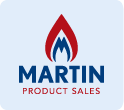Martin Product Sales LLC
Chip Seal
“The increased use of chip seals for maintenance can be a successful, cost-effective way of using preventive maintenance to preserve both low-volume and higher-volume pavements.” – National Cooperative Highway Research Program (NCHRP), Synthesis 342
Effective Pavement Preservation
Chip seals are economical maintenance treatments designed to correct minor surface deficiencies and to protect and prolong the lives of pavements. Long term pavement performance studies have shown that chip seals are one of the most cost-effective methods of pavement preservation. They are used on all types of roads, from gravel county roads to high volume interstate pavements, which are structurally sound but are beginning to age and may have some minor surface distress or have lost their skid resistance. Chip seals are also commonly used as a first bituminous treatment over compacted bases on low volume roads. Polymer modified asphalts, tighter specifications on the use of clean, single-size aggregate, and automated application equipment have all been recently developed to improve the construction and reliability of high performance chip seals, especially on high traffic volume roads. The graphic shows where chip seals can be effective.
Material Selection & Design
A chip seal design should be done in the laboratory using the project aggregate. The selection and application rates of both binder and aggregate are very important. Rapid setting emulsions are normally the binder of choice, although medium-setting emulsions can be used with fine aggregates and under other special circumstances. The choice of anionic or cationic depends upon the project. Typically, anionics have more affinity for limestone aggregates. Cutback asphalts or hot applied asphalt cements are also often used. The best aggregates are one-sized (about 3/8” or 9.5 mm) and cubic in shape to provide good stability and maximum contact with tires. Hard aggregates with good resistance to abrasion and degradation give the best results in resisting traffic wear and impact. Dust prevents the asphalt from coating the aggregates, so the chips should be clean whenever possible. High float emulsions and cutbacks seem to be more forgiving for dusty aggregates. If an emulsion is used, it should be formulated to break quickly with the chip application. Polymer modified emulsions usually give excellent early chip retention. The binder shot rate should be calculated to achieve optimal embedment of the chip in the residual asphalt. In the field, the shot rate should be adjusted for the surface condition of the existing pavement, with higher rates for aged, porous surfaces. There should be enough asphalt to hold the aggregate without shelling, but not so much that it will bleed through the surface.


